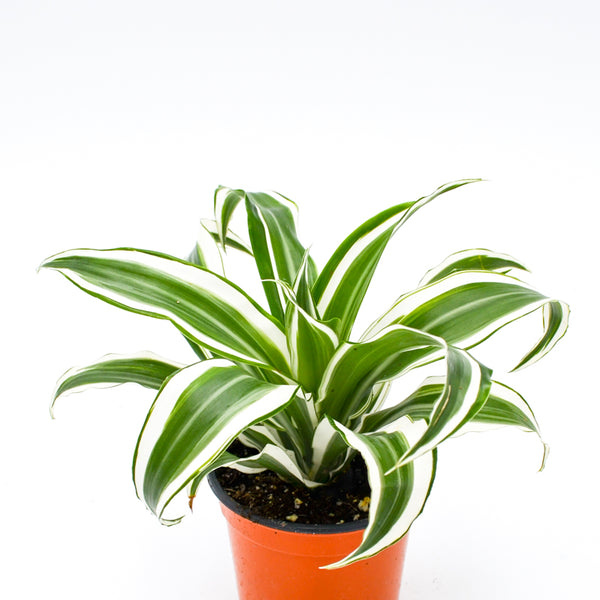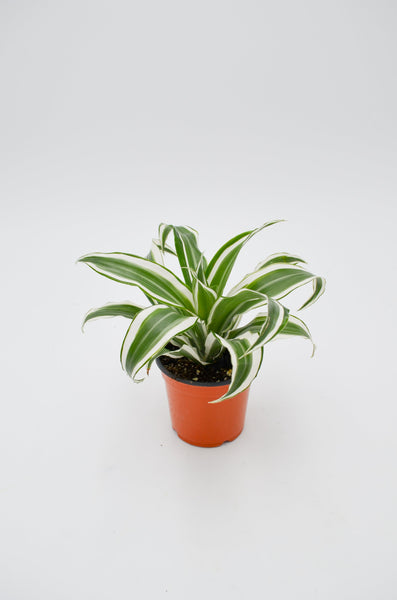Dracaena 'Warneckii'
The Dracaena Warneckii, also known as Dracaena fragrans 'Warneckii,' is an attractive and low-maintenance houseplant native to tropical regions of Africa. With its striking, sword-shaped leaves that showcase contrasting stripes of green and white, it is an ideal choice for adding a touch of elegance to any indoor space. Dracaena Warneckii is also known for its air-purifying qualities, making it a popular choice for improving indoor air quality.
To provide optimal care for your Dracaena Warneckii, follow these guidelines:
-
Light: Dracaena Warneckii prefers bright, indirect light. Avoid placing the plant in direct sunlight, as this can scorch its leaves. It can also tolerate lower light conditions, but the variegation on the leaves might become less pronounced.
-
Water: Water your Dracaena Warneckii when the top 1-2 inches of soil feels dry to the touch. Ensure the plant has well-draining soil and a pot with drainage holes to prevent root rot. Be careful not to overwater, as this is the most common cause of issues with Dracaena plants.
-
Soil: Use a well-draining potting mix that contains a blend of peat, perlite, and bark. This will allow excess water to drain away from the roots and help prevent rot.
-
Humidity: Dracaena Warneckii can tolerate average household humidity levels but will appreciate higher humidity if possible. You can increase humidity by placing a tray filled with water and pebbles beneath the plant or by using a humidifier.
-
Fertilizer: Fertilize your Dracaena Warneckii sparingly, using a balanced liquid houseplant fertilizer diluted to half strength. Fertilize every 4-6 weeks during the growing season (spring and summer) and avoid fertilizing in the winter months.
-
Temperature: Dracaena Warneckii thrives in temperatures ranging from 65-75°F (18-24°C). Keep your plant away from cold drafts and extreme temperature fluctuations.
-
Pruning: Prune your Dracaena Warneckii occasionally to maintain its shape and remove any yellowing or damaged leaves. Use clean, sharp pruning shears to prevent the spread of disease.
-
Repotting: Dracaena Warneckii typically needs repotting every 2-3 years. Choose a pot that is 1-2 inches larger in diameter than the current pot and ensure it has drainage holes.
Pet-safe or not?
According to the ASPCA's website, the Dracaena Warneckii is considered toxic to pets, including cats and dogs. If ingested, the plant can cause symptoms such as vomiting (occasionally with blood), depression, loss of appetite, hypersalivation, and dilated pupils in cats. To ensure the safety of your pets, it is essential to keep your Dracaena Warneckii out of their reach. If you suspect your pet has ingested any part of the plant, contact your veterinarian immediately.




